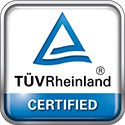EE Tools
TOPMAX III
Overview
EXPERT UNIVERSAL DEVICE PROGRAMMER
TopMax-III is a high-speed universal device programmer for USB 1.1/2.0/3.0 PC-interface. It programs a 64Mbit (AM29LV641) flash memory in 42 seconds. This is a true low-cost production-oriented system. The TopMax-III meets the demands of today’s programming solution for lab and production online applications. TopMax-III is a software-driven device programmer that supports a wide variety of programmable devices including EPROM, EEPROM, Serial PROM, EPLD, PEEL, GAL, FPGA, and single chip Microcontroller. The great advantage of this programmer is its programming speed and superior software. It’s controlled via a host IBM PC or compatible computer. The operating software has a user-friendly interface that includes window pull-down menus and virtual memory management to deal with very large files.
- Concurrent Universal Device Programmer
- Extremely fast SPI, QPI Serial memory support
- MX25L12835FM(SPI), P:41.8 V:6.2
- MX25L12835FM(QPI), P:37.6 V:2.1
PROMAX II 4G
OVERVIEW
CONCURRENT UNIVERSAL PROGRAMMER FOR PC LOW-COST, HIGH-PERFORMANCE 4-GANG PROGRAMMER
ProMax II 4G is the most innovative and cost-effective 4-gang programming solution on the market. ProMax II 4G supports a wide variety of programmable devices. Its state-of-the-art technology and high-speed programming algorithms optimize programming reliability and output.
- Concurrent Universal Device Programmer
- Extremely fast SPI, QPI Serial memory support
- MX25L12835FM(SPI), P:41.8 V:6.2
- MX25L12835FM(QPI), P:37.6 V:2.1
TOPMAX II
OVERVIEW
TopMaxII is a high-speed universal device programmer for USB 1.1/2.0/3.0 PC-interface. It programs a 64Mbit (AM29LV641) flash memory in 42 seconds. This is a true low-price production-oriented system. The TopMaxII meets the demands of today’s programming solution for lab and production line applications.
- High-speed Universal Programmer
- Support USB 1.1 / 2.0 / 3.0 Port in PC
- Single Socket
CHIPMAX2
OVERVIEW
UNIVERSAL DEVICE PROGRAMMER FOR PC/USB
ChipMax2 is a low cost and high-performance universal device programmer for PC USB 2.0/3.0 interface. It programs a 64 Mbit flash memory in 42 seconds. ChipMax2 supports over 13000 programmable devices with low voltage (1.8 V). ChipMax2 is the state-of-art universal programmer offers you the most advanced programming facilities with the most user-friendly interface.
- Universal Programmer with 48-pin Textool Socket
- Supports Over 13,000 Programmable Devices
- B/P/V Takes 85 Sec. For 8 of 64 Mbit Flash Memory



















